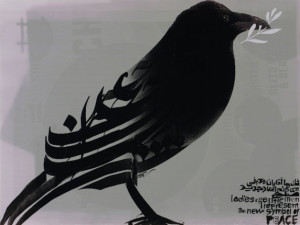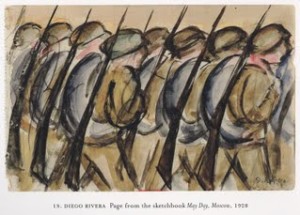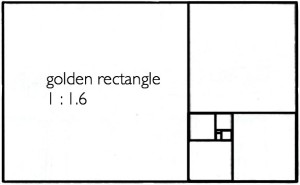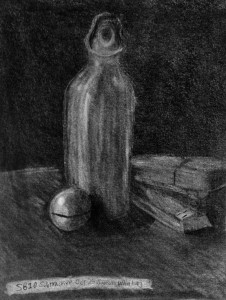2d Design V2 Tool Names
ELEMENTS:
- Line – The way we treat our lines establishes a particular/dominant mood/emotion.
- Shape – Flat, 2D aspects of form, as opposed to volume (think silhouette)
- Value/Tone – Relative lightness or darkness
- Texture – Can be actual or implied
- Space – Positive space is the figure/object you're drawing; Negative space is the area AROUND the figure object you're drawing
- Color – (we won't use color in Beginning Drawing)
PRINCIPLES:
- Balance – can be Symmetrical or Asymmetrical.
Symmetrical = dividing a composition into two equal halves with seemingly identical elements on each side.
Asymmetrical = balance based upon a visual sense of equilibrium that can be felt more than it can be measured. There are no specific rules for asymmetrical balance except that of diversity
image credit - Repetition/Rhythm – a repeating visual element (line, shape, pattern, texture, movement); a flowing and regular occurrence. A subcategory of repetition is pattern.
Pattern – any compositionally repeated element or regular repetition of a design or single shape; pattern drawing sin commercial art may serve as models for commercial imitation. - Focus/Emphasis/Dominance – the prime center of visual importance within a composition to which all other visual elements yield; it holds the viewer's attention because of its attractive and dominant influence on its surroundings Rule of Thirds – a compositional tool that makes use of the notion that the most interesting compositions are those in which the primary element is off center. Basically, take any frame of reference and divide it into thirds placing the elements of the composition on the lines in between.
Visual Center – The visual center of any page is just slightly above and to the right of the actual (mathematical) center. This tends to be the natural placement of visual focus, and is also sometimes referred to as museum height.
Golden Rectangle – Another method of arranging a composition.
- Unity/Harmony
- Scale – The overall size of an object
[collage by Nacick Paliughi] - Proportion – The relative size of different elements of an artwork. An example is the e xaggerated proportions in caricatures.
- Contrast – When one extreme is pitted against another. Bright vs Dark. Heavy vs Light, Rough vs Soft, etc.
- Movement – How the artist leads the viewer's eye around the page
- Depth – overlapping forms suggest depth; changes in scale can suggest depth; illusionistic perspective can suggest depth, atmospheric perspective (see images here) can suggest depth
foreshortening also shows depth
OTHER IMPORTANT DEFINITIONS
-
Picture plane – the size and shape of your paper/drawing surface.
-
Closed composition – forms seem well contained by the edges of the picture plane
-
Open composition – the imagery appears unrelated to the size/shape of the paper, creating an impression of extending beyond the picture plane
-
Gestalt – "The sum of the whole is greater than its parts" is the idea behind the principle of gestalt. It's the perception of a composition as a whole. While each of the individual parts have meaning on their own, taken together, the meaning may change. Our perception of the piece is based on our understanding of all the bits and pieces working in unison.
-
Positive and Negative Space –
- Point of view – the position from which the composition is seen by the artist (eye level and distance from the subject)
Composition exercise in class by John Ciampoli
Link to PDF of the above Principles of Design
2d Design V2 Tool Names
Source: http://teaching.ellenmueller.com/drawing-i/resources/elements-principles-of-2d-design/
Posted by: haleycouldic1973.blogspot.com






0 Response to "2d Design V2 Tool Names"
Post a Comment